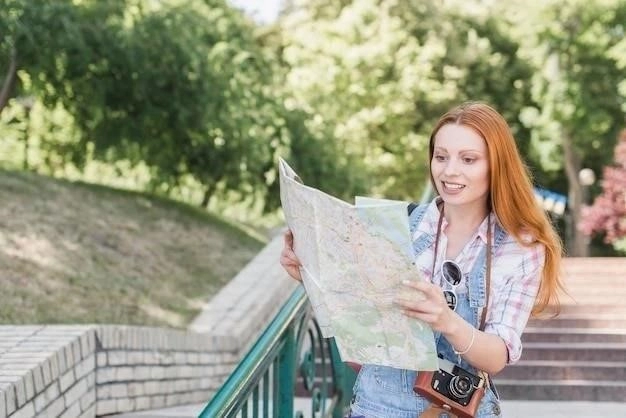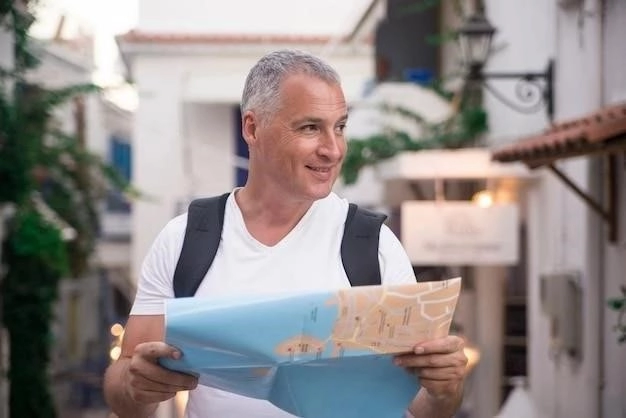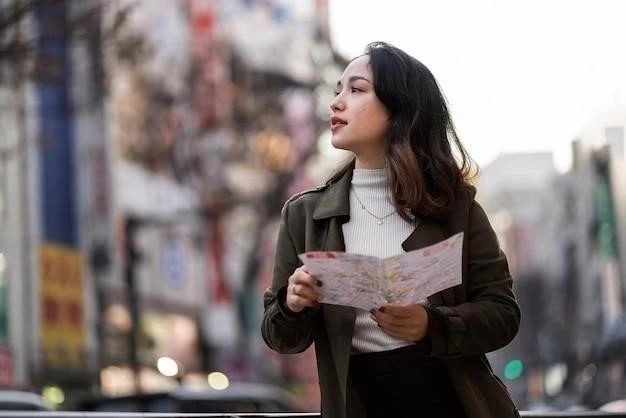Zambia, a landlocked country in Southern Africa, beckons with its raw beauty and unparalleled wildlife encounters. Home to the awe-inspiring Victoria Falls, diverse national parks teeming with wildlife, and a rich cultural heritage, Zambia offers a unique and unforgettable travel experience.
Planning Your Trip
Embarking on a journey to Zambia requires careful planning to ensure a seamless and enriching experience. Here’s a comprehensive guide to help you plan your dream Zambian adventure:
Best Time to Visit:
Zambia offers year-round travel opportunities, but the best time to visit depends on your interests. For optimal wildlife viewing, the dry season (May to October) is ideal, with less vegetation and animals congregating around water sources. The shoulder seasons (April-May and September-October) offer pleasant weather and fewer crowds.
Budget:
Zambia caters to various budgets, from luxury lodges to budget-friendly campsites. Accommodation, transportation, and activities contribute to the overall cost. Consider your preferred travel style and research prices to determine a suitable budget.
Itinerary:

Zambia’s diverse attractions require a well-planned itinerary. Allocate sufficient time for each destination, considering travel distances. Key highlights include Victoria Falls, South Luangwa National Park, Lower Zambezi National Park, and Kafue National Park.

Booking:
Advance bookings are highly recommended, especially during peak season. Secure flights, accommodation, and tours in advance to avoid disappointment. Consider using a reputable travel agent for expert advice and hassle-free arrangements.
Visas and Entry Requirements

To ensure a smooth entry into Zambia, it is essential to be aware of the visa requirements and customs regulations. Here’s a comprehensive guide to help you navigate the process:
Visas:
Most nationalities require a visa to enter Zambia. Visas can be obtained upon arrival at designated ports of entry or in advance from Zambian embassies or consulates. It is advisable to check the specific visa requirements for your nationality well in advance of your trip.
Passport Validity:
Your passport must be valid for at least six months beyond your intended stay in Zambia. Ensure that you have enough blank pages in your passport for entry and exit stamps.
Yellow Fever Vaccination:
Zambia requires proof of yellow fever vaccination for all travelers arriving from countries with a risk of yellow fever transmission. It is recommended to get vaccinated at least 10 days before your trip.
Customs Regulations:
Zambia has customs regulations regarding the import and export of goods. Familiarize yourself with these regulations to avoid any complications upon arrival. It is advisable to declare any valuable items you are carrying.
Getting to Zambia
Zambia is accessible through various international gateways, making it convenient for travelers from around the globe. Here’s a guide to your travel options:
By Air:
The primary international airport in Zambia is Kenneth Kaunda International Airport (LUN), located in Lusaka, the capital city. Several major airlines operate flights to Lusaka from international hubs, offering connections from various parts of the world.
By Road:
Zambia is connected by road to its neighboring countries, allowing for scenic overland journeys. However, road conditions can vary, and it’s essential to research and plan accordingly. Border crossings may involve visa requirements and customs procedures.
Internal Flights:
Once you arrive in Zambia, domestic flights are a convenient way to travel between cities and tourist destinations. Proflight Zambia, the national airline, offers regular flights to major cities and safari destinations.
Visa Upon Arrival:
Citizens of certain countries are eligible for a visa upon arrival at designated ports of entry. It’s essential to verify the latest visa regulations before your trip to ensure a smooth entry into Zambia.
Getting Around Zambia
Navigating Zambia’s diverse landscapes requires a combination of transportation options. Here’s a guide to help you traverse the country with ease:
Domestic Flights:
Domestic flights offer the most efficient way to cover long distances and reach remote safari destinations. Proflight Zambia, the national airline, operates regular flights connecting major cities and national parks.
Road Travel:
Zambia has a network of roads, but conditions can vary significantly. Major highways are generally well-maintained, while rural roads may be unpaved and challenging during the rainy season. Self-driving is possible, but it’s advisable to hire a 4×4 vehicle, especially for off-the-beaten-path adventures.
Bus Services:
Public buses are a common and affordable mode of transportation for traveling between cities and towns. Several bus companies operate in Zambia, offering varying levels of comfort and reliability. It’s recommended to book tickets in advance, especially for long-distance journeys.
Private Transfers:
For a more comfortable and personalized travel experience, consider hiring a private driver or transfer service. This option is particularly convenient for airport transfers, intercity travel, and exploring specific regions at your own pace.
Accommodation
Zambia offers a wide range of accommodation options to suit every taste and budget, from luxurious lodges set in pristine wilderness to comfortable guesthouses in bustling cities. Here’s a guide to help you find the perfect place to stay:
Safari Lodges and Camps:
For an immersive safari experience, consider staying in luxurious lodges or tented camps located within or near national parks. These properties offer exceptional game viewing opportunities, personalized service, and often include meals and activities in their rates.
Guesthouses and Boutique Hotels:
In cities and towns, you’ll find a variety of guesthouses and boutique hotels offering comfortable accommodations at reasonable prices. These options are ideal for travelers seeking a more intimate and local experience.
Campsites:
Zambia has numerous campsites located in scenic areas, providing budget-friendly accommodation for adventurous travelers. Campsites typically offer basic facilities such as ablution blocks and barbecue areas.
Booking in Advance:
It’s highly recommended to book your accommodation in advance, especially if traveling during peak season (June to October) or if you have your heart set on a particular property. Advance bookings ensure availability and often offer better rates.

Health and Safety
Zambia is a generally safe and welcoming country for travelers, but it’s essential to prioritize your health and well-being during your trip. Here’s a guide to help you stay healthy and safe:
Health Precautions:
Consult your doctor well in advance of your trip to discuss necessary vaccinations and any health concerns. Yellow fever vaccination is mandatory for entry into Zambia. It’s also advisable to carry a comprehensive travel insurance policy that covers medical expenses, evacuation, and trip cancellation.
Water and Food Safety:
Drink bottled water and avoid consuming tap water unless it has been boiled or purified. Be cautious with food hygiene, opting for well-cooked meals from reputable establishments. Avoid consuming unpeeled fruits and vegetables.
Malaria Prevention:
Malaria is present in Zambia. Consult your doctor about appropriate malaria prophylaxis medication and take necessary precautions, such as using mosquito repellent, wearing long sleeves and trousers, and sleeping under mosquito nets.

Wildlife Safety:
Zambia is home to incredible wildlife, but it’s crucial to observe safety precautions. Always maintain a safe distance from wild animals and follow the guidance of park rangers or tour guides. Avoid walking alone at night, especially in areas known for wildlife activity.
Things to Do in Zambia
Zambia offers a wealth of experiences for every type of traveler, from thrilling wildlife encounters to breathtaking natural wonders and cultural immersions. Here are some of the top things to do in Zambia:
Wildlife Viewing:
Zambia is renowned for its exceptional wildlife viewing opportunities. Embark on game drives, walking safaris, or boat cruises in national parks like South Luangwa, Lower Zambezi, and Kafue to witness the incredible diversity of African wildlife, including elephants, lions, leopards, and abundant birdlife.
Victoria Falls:
Witness the awe-inspiring Victoria Falls, one of the Seven Natural Wonders of the World. Explore the falls from various viewpoints, experience the thrill of white-water rafting on the Zambezi River, or take a scenic helicopter flight for a bird’s-eye view.
Adventure Activities:
Zambia is an adventure lover’s paradise. Experience the thrill of bungee jumping, white-water rafting, and kayaking at Victoria Falls. Embark on multi-day hiking trails in national parks, or go canoeing or fishing on the Zambezi River or Lake Kariba.
Cultural Experiences:
Immerse yourself in Zambia’s rich cultural heritage by visiting traditional villages, interacting with local communities, and learning about their customs and traditions. Explore vibrant markets, attend cultural performances, and discover the country’s fascinating history and art.
Wildlife Viewing
Zambia stands as a premier wildlife destination in Africa, boasting vast protected areas teeming with an astounding array of species. Here’s a glimpse into the world of wildlife viewing in Zambia:
National Parks and Reserves:
Zambia is home to numerous national parks and reserves, each offering unique habitats and wildlife viewing opportunities. South Luangwa National Park is renowned for its leopard sightings and walking safaris. Lower Zambezi National Park offers a combination of riverine and woodland ecosystems, while Kafue National Park is known for its vastness and diverse landscapes.
Safari Activities:
Explore the wilderness through a variety of safari activities tailored to different preferences. Embark on game drives in open 4×4 vehicles with experienced guides, venture out on foot for intimate walking safaris, or glide along waterways on boat cruises for a different perspective of wildlife.
Exceptional Sightings:
Zambia offers the chance to witness iconic African wildlife in their natural habitat. Encounter herds of elephants, observe lions on the prowl, catch a glimpse of elusive leopards, and marvel at the grace of giraffes, zebras, and antelopes.
Birdwatching Paradise:
With over 700 bird species recorded, Zambia is a paradise for birdwatchers. From vibrant kingfishers to majestic eagles, the country’s diverse ecosystems support a rich avian population. Keep an eye out for endemic species and migratory birds during your safari adventures.
Victoria Falls
Victoria Falls, locally known as “Mosi-oa-Tunya” (the smoke that thunders), is a breathtaking spectacle of nature and one of the Seven Natural Wonders of the World. Here’s what you can experience at this iconic destination:
Awe-Inspiring Views:
Stand in awe as the Zambezi River plunges over a 100-meter-high cliff, creating a curtain of water that stretches for over a mile. Explore various viewpoints offering different perspectives of the falls, each more impressive than the last.
Thrilling Activities:
For adrenaline junkies, Victoria Falls offers a range of heart-pumping activities. Plunge into the abyss on a bungee jump, experience the adrenaline rush of white-water rafting on the Zambezi River below the falls, or soar above the chasm on a zipline for unparalleled views.
Helicopter Flight:
Embark on a helicopter flight over Victoria Falls for an unforgettable aerial perspective. Witness the sheer scale of the falls from above, marvel at the surrounding rainforest, and capture breathtaking photographs of this natural wonder.
Sunset Cruise:
As the sun begins its descent, embark on a sunset cruise along the Zambezi River. Sip cocktails and enjoy canapés as you witness the falls bathed in the golden hues of sunset, creating a truly magical experience.
Adventure Activities
Zambia is a haven for adventure enthusiasts, offering an array of thrilling activities amidst stunning natural landscapes. Here’s a taste of the adventure that awaits:
White-Water Rafting:
Challenge yourself to an unforgettable white-water rafting experience on the Zambezi River, renowned as one of the world’s best rafting destinations. Navigate through rapids with names like “The Morning Glory” and “The Devil’s Toilet Bowl” for an adrenaline-pumping adventure.
Bungee Jumping and Gorge Swinging:
Take the leap of faith and bungee jump or gorge swing from the Victoria Falls Bridge, plunging towards the roaring Zambezi River below. This iconic experience offers breathtaking views and an adrenaline rush like no other.
Kayaking and Canoeing:
Explore the tranquil waters of the Zambezi River, Lake Kariba, or the Lower Zambezi National Park by kayak or canoe. Paddle through serene landscapes, observe wildlife from a unique perspective, and enjoy the tranquility of nature.
Hiking and Trekking:
Embark on scenic hikes and treks through Zambia’s national parks and mountainous regions. Trek to the summit of Mount Mulanje in South Luangwa National Park, explore the trails of Kafue National Park, or challenge yourself with a multi-day hike in the Nyika Plateau National Park.
Cultural Experiences
Zambia’s rich cultural tapestry is woven with ancient traditions, vibrant art forms, and the warmth of its people. Here are some enriching cultural experiences to immerse yourself in:
Traditional Villages:
Venture beyond the beaten path and visit traditional villages to gain insights into the authentic Zambian way of life. Interact with local communities, learn about their customs and beliefs, and witness traditional dances and ceremonies.
Local Markets:
Immerse yourself in the vibrant atmosphere of local markets, where you can browse for handicrafts, textiles, traditional medicines, and fresh produce. Engage with local vendors, practice your bargaining skills, and discover unique souvenirs to take home.
Cultural Museums:
Explore Zambia’s history and heritage at cultural museums located in major cities and towns. The Livingstone Museum in Livingstone showcases the country’s archaeological treasures and colonial past, while the Lusaka National Museum in Lusaka offers insights into Zambian art, history, and culture.
Festivals and Celebrations:
Immerse yourself in the vibrant spirit of Zambian festivals and celebrations, such as the Kuomboka Ceremony of the Lozi people, the N’cwala Ceremony of the Ngoni people, and the Lwiindi Ceremony of the Tonga people. These events showcase traditional dances, music, and rituals, providing a glimpse into Zambia’s cultural diversity.
Zambian Cuisine
Zambian cuisine is a delightful fusion of flavors and culinary traditions, influenced by indigenous ingredients and neighboring cultures. Here’s a glimpse into the world of Zambian gastronomy:
Staple Foods:
The staple food in Zambia is “nshima,” a thick porridge made from maize flour, typically served with a variety of relishes known as “ndiyo.” Other common starches include rice, sweet potatoes, and cassava.
Flavorful Relishes:
“Ndiyo” play a crucial role in Zambian cuisine, adding flavor and variety to meals. Popular relishes include leafy greens such as “rape” (similar to spinach), pumpkin leaves, and cassava leaves, often cooked with tomatoes, onions, and peanuts.
Meat and Fish Dishes:
Meat lovers can savor grilled or stewed dishes featuring beef, goat, chicken, or fish. “Ifisashi” is a popular dish made with green vegetables and pounded groundnuts, often served with meat or fish.
Fruits and Beverages:
Zambia is abundant in fresh fruits, including mangoes, pineapples, bananas, and watermelons. Quench your thirst with locally brewed beers, such as “Mosi Lager,” or try “chibuku,” a traditional fermented maize drink.
What to Eat and Drink
Zambia’s culinary scene offers a delightful fusion of traditional flavors and international influences. Here are some must-try dishes and beverages to tantalize your taste buds:
Nshima and Ndiwo:
No culinary journey through Zambia is complete without savoring “nshima,” the country’s staple food. This thick porridge, made from maize flour, is typically served with a variety of relishes known as “ndiwo,” such as leafy greens, stewed vegetables, or meat and fish dishes.
Ifisashi:
Indulge in “ifisashi,” a flavorful dish made with green vegetables, often rape (similar to spinach) or pumpkin leaves, cooked with pounded groundnuts, tomatoes, onions, and spices. Ifisashi can be enjoyed as a vegetarian dish or served with meat or fish.
Kapenta with Nshima:
Savor the unique flavors of “kapenta,” small dried fish from Lake Tanganyika, typically pan-fried until crispy and served with nshima. This dish is a true Zambian delicacy, offering a burst of umami flavor.
Mosi Lager and Chibuku:
Quench your thirst with a refreshing Mosi Lager, Zambia’s most popular beer, known for its crisp and clean taste. For a more traditional experience, try “chibuku,” a locally brewed fermented maize drink with a slightly tangy and sour flavor.

Where to Eat
Zambia offers a diverse culinary scene, from casual eateries serving traditional Zambian fare to upscale restaurants showcasing international cuisine. Here’s a guide to help you find the perfect dining experience:
Local Restaurants and Eateries:
For an authentic taste of Zambia, venture into local restaurants and eateries, often found in bustling markets or along roadsides. These establishments offer a chance to savor traditional dishes like nshima and ndiwo, ifisashi, and kapenta with nshima, prepared with local ingredients and time-honored recipes.
Hotel Restaurants:
Many hotels in Zambia, especially those catering to international travelers, offer a variety of dining options, ranging from buffet-style meals to à la carte menus. These restaurants often feature a mix of Zambian and international cuisine, providing a convenient and comfortable dining experience.
International Cuisine:
Major cities in Zambia, such as Lusaka and Livingstone, offer a growing selection of restaurants specializing in international cuisine. Indulge in Italian pasta, Chinese stir-fries, Indian curries, or American-style burgers, satisfying your cravings for flavors from around the globe.
Fine Dining:
For a special occasion or an upscale dining experience, Zambia has a handful of fine-dining establishments, primarily located in major cities and tourist hubs. These restaurants offer sophisticated ambiance, exquisite cuisine, and impeccable service.











